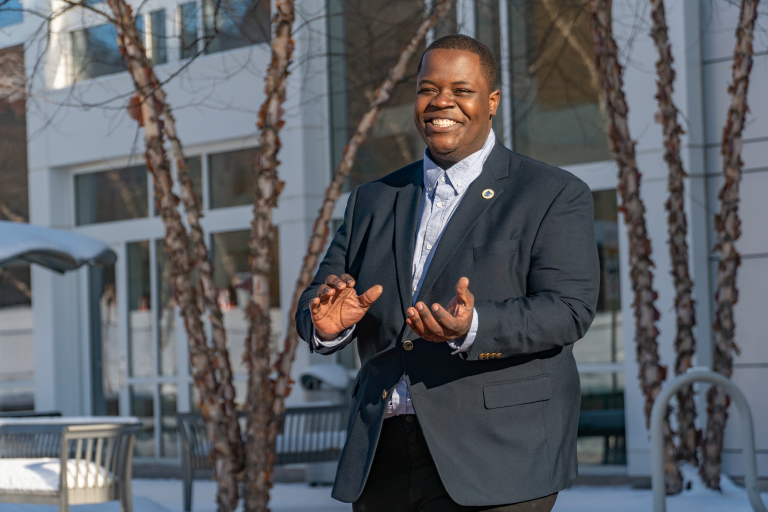When a sudden, small expense threatens an entire college career
Some schools and nonprofits target the surprise hurdles — dorm deposits, rides to campus — that cause low-income students to drop out.
By Karen Weese | Originally published on washingtonpost.com on January 30, 2022
“This happens every day, to thousands and thousands of students,” said Alice Anne Bailey, a researcher and adviser on higher education policy with American University’s Center for Postsecondary Readiness and Success. “The number one reason that low-income students drop out is financial. And often it’s a little thing, that a middle- or higher-income family wouldn’t even think twice about.”
Irene Adkins worked the overnight shift at a nursing home while attending classes during the day at Southern West Virginia Community and Technical College. Until she could afford a car to make the six-mile trip to and from campus, she walked.
“A lot of people think if you give a kid a scholarship, now the kid’s set, they’ve got everything they need,” said Chris Metzler, director of student services at Thaddeus Stevens College of Technology in Pennsylvania. “Nothing could be further from the truth.”
Across the country, some colleges and nonprofit organizations are recognizing these hidden obstacles and finding creative ways to clear the path. Their efforts offer a template for other institutions looking to attract low-income students, serve them and help them succeed.
“I had an incoming art student from Colorado who called me and said she was selling her senior art projects trying to raise the money for the plane ticket and wasn’t sure she could get here,” recounted Chris Lakes, director of student success and transition at Berea College in Kentucky, which serves high-achieving students from the bottom economic quintile. “I said, ‘Look, don’t sell your stuff, we’ll figure out a way to get you here.’” The school paid a portion of her airfare.
“We had one student whose family didn’t have a car and was so transient that she never went home to the same house that we’d picked her up from,” Executive Director Sam Rowser said. “We drove her to and from college for four years of undergrad and two years of medical school.” She is now a doctor.
“They bring their own toiletries and towels and bedding. This is not the Hampton Inn,” Lakes said. “But it allows them to participate in something they might otherwise be unable to afford.”
“I didn’t have the money, my mom didn’t have the money,” she said. “An unexpected $300 might as well have been $5,000.”
Still, for many of these students, it’s not just academic costs that make life hard. It’s basic living expenses, too. On Point, for one, gives its participating students a backpack, school supplies, bedding, alarm clock and a $150 clothing allowance before they leave for their first semester.
“We had a kid who kept asking to borrow the ‘silver tape’ in the workshop, and his instructor finally figured out that he was using the duct tape to tape his boots back together, because he couldn’t afford new boots,” Metzler said.
It helps when colleges find creative ways to make paid work fit into students’ schedules, noted Adkins. At a satellite campus of Kentucky’s Lindsey Wilson College where she recently completed her bachelor’s degree, she was in a “weekender program” that allowed her to take classes in solid blocks on Fridays and Saturdays. From Monday through Thursday, she could still work the paralegal job that paid for her rent and living costs.
“We have about a third of the groundskeeping staff that a college our size would normally have, because two-thirds of it is student workers,” Lakes said. Students also work in Berea’s Boone Tavern Hotel; in the college’s Appalachian workshop, they make woven blankets and pottery for sale and shipment across the country. An on-campus job carries no stigma, Lakes added, because everyone has one.
Some bigger schools try to anticipate need in other ways. Georgia State University uses data analytics to comb student records and flag students with solid academic records who may be at risk because of modest tuition balances or unpaid fees. Advisors can award small “retention grants” — as little as $300 in some cases — to pay what’s owed, keeping the students in school without requiring them to ask for financial assistance.
Yet with more than 40 percent of U.S. undergraduate students coming from low-income families — which the federal government defines as household income at or below 150 percent of the federal poverty level, currently $41,625 for a family of four — the sobering fact remains that most colleges don’t offer much along these lines.
“When our college takes a kid who is economically disadvantaged, and he graduates with a degree, starts making good money, and goes back home and can buy a house, pay his taxes, and contribute to his community, that’s life-changing — not just for him, but for all of us,” he said.
Tony Williams eventually returned to college, as did Kesare Mowrer. He is studying human services at Cypress, and she is finishing her bachelor’s degree in accounting at Temple University. Both say outside support from their institutions, nonprofit groups and others has been crucial.
As for Giovanni Harvey, he did make it to his first day of college after all. An On Point volunteer arrived on his doorstep and helped him load up his few belongings; an hour later, he was unpacking in his new dorm room. “That one very basic necessity — transportation — literally made all the difference,” he said recently.
Harvey is now a senior communications major at SUNY Polytechnic Institute in Utica, where he founded a mentoring program and served as student body president. He will graduate in December.


 RETURN TO NEWS
RETURN TO NEWS